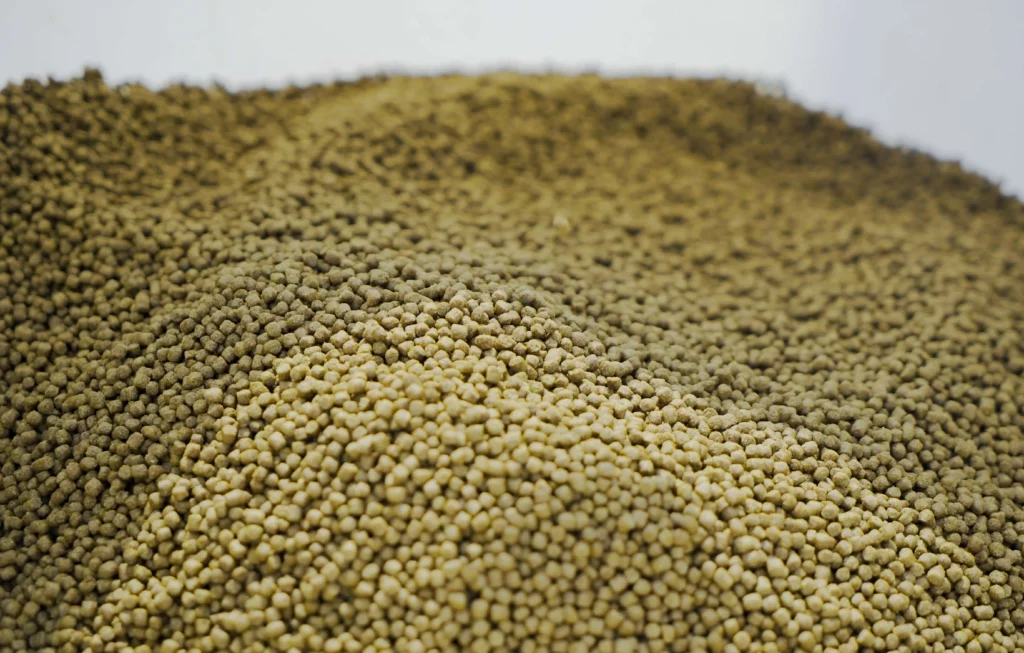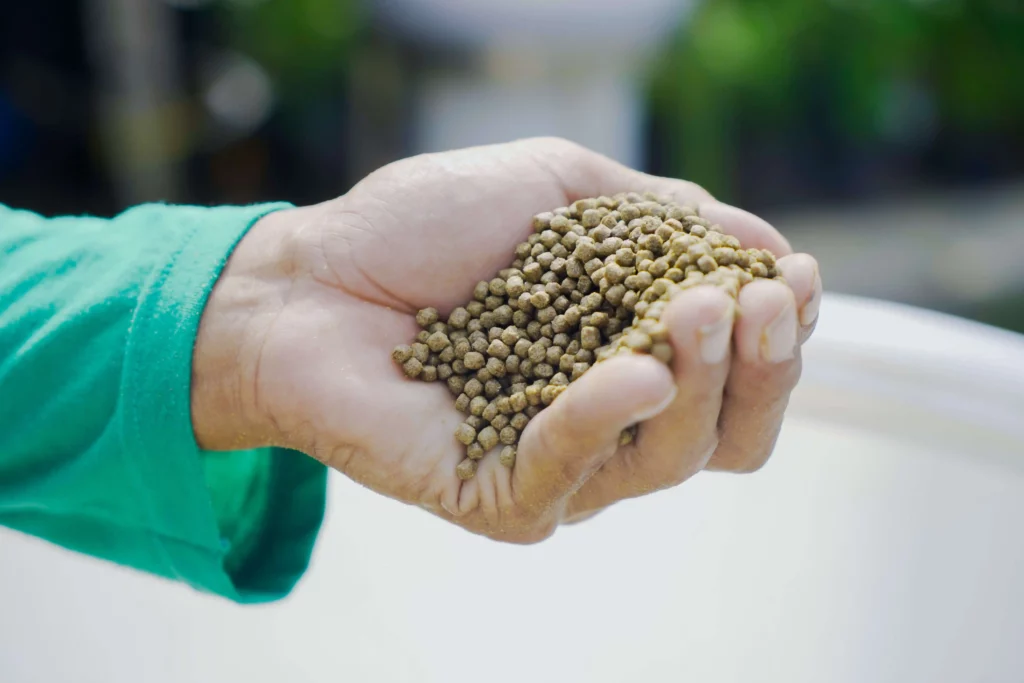Protein is one of the main ingredients in shrimp feed. However, high protein shrimp feed is not always good for shrimp. In fact, shrimp feed with high protein content can trigger the growth of ammonia which can poison shrimp in ponds. Very dangerous, right? Come on, find out tips & tricks for feeding high protein shrimp so they don't harm!
Benefits of Protein for Shrimp
Protein is the type of nutrient with the highest percentage in the composition of shrimp feed. Determining the percentage of protein in feed is important for effective feed formulation and feed cost management. Even though it is good for shrimp, the protein content in the feed should not be too high, let alone too low. Come on, see the impact of giving too high and too low protein to shrimp!
Impact of Too High Protein

Shrimp need protein to grow and develop because protein is one of the nutrients that triggers shrimp growth. Therefore, shrimp feed is required to contain protein so that shrimp can grow properly. Shrimp prefer feed with sufficient protein content, because it is made from shrimp head flour which has a sharper aroma than other feeds. This also helps the growth of shrimp.
However, the use of shrimp feed with high protein content is considered unsuitable. This is because the high protein content can increase the levels of ammonia, H2S, NH3, and NH2 in pond water. If the levels of these compounds increase, the shrimp in the ponds will also experience a decrease in the immune response and become sick.
The high-protein feed consumed by shrimp becomes dangerous for the shrimp themselves when the feed becomes feces in pond water. Even though it has been consumed, the feces still contain high levels of protein which can increase ammonia levels in ponds. It is just as dangerous when the feed is not consumed, the remaining feed will also increase ammonia levels in the pond. Therefore, avoid feed with a high protein content, OK, Farmers!
Impact of Too Low Protein
Protein is indeed dangerous if used too much. However, the protein content in shrimp feed can't be too low, ladies and gentlemen! Shrimp still need energy pprotein to grow, move, and adapt properly.
So that the protein in the feed does not turn to poison the shrimp, you can use feed with sufficient protein content. This type of feed can usually reduce cultivation costs. However, the protein content should not be too low. If the protein content is too low, the shrimp growth will not be optimal even though the cultivation costs can be reduced and the pond water quality is good.
Percentage of Protein Needs for Shrimp Growth

The high or low protein content in shrimp feed is determined by the protein content in it. Feed is declared to have a high protein content, when the protein content in it ranges from 35-45%.
Meanwhile, feeds that have sufficient protein tend to be low, the protein content is <30-34%. The protein content of 30-34% in the feed is sufficient to optimize shrimp growth. Therefore, to optimize shrimp growth and maintain pond water quality at the same time, the protein content in feed is highly recommended not to exceed 30-34%.
Factors Affecting Protein Absorption Rate
The optimum rate of absorption of protein from feed is highly dependent on many factors. These factors include:
- Feed quality
- Energy digestibility
- Water quality
- Stocking density
- Frequency of feeding
- Feed size
- Types and biomass of natural microorganisms in ponds
- Growth rate
So, even if you use high-protein feed, it will be difficult for the shrimp to absorb the protein content in the feed if the factors mentioned above are not met.
It was mentioned above that one of the factors that encourage protein absorption is the quality of pond water. In this case, feed with a high protein content should be avoided because it can contaminate the pond with its ammonia.
Shrimp Feed Management Based on Protein Content

Good feed management and pond water quality is one of the tips needed when you want to provide feed with high protein content. Combination between feed, shrimp, and water quality support each other to produce optimal production.
One feed management strategy that you can do is feed rotation strategy. This strategy is used to increase the efficiency of shrimp farming. Feed rotation is carried out by alternating high-protein feeds with low-protein feeds. Rotation is carried out without reducing the growth rate of the shrimp so that production cost efficiency and yields are higher.
The feed rotation strategy is based on the age, size and weight of the shrimp. In addition, this strategy considers the shrimp's need for a protein diet which depends on body size, weight, culture system, stocking density, environmental factors, biological value of protein sources, non-protein energy, salinity, and culture pond temperature.
Apart from managing shrimp feed, you can also use probiotics to help absorb protein in shrimp. Probiotics can be directly mixed into pond water on a regular basis. Probiotics are believed to be able to keep the pond environment in good condition by eradicating ammonia, which can make it easier for the shrimp to absorb the nutrients in the feed.
Consult Feed Content Through Cultivation Consultation
Need Help Regarding Shrimp Cultivation Business?
Fill in your personal data in the following form. Our team will immediately contact you via the number cellphone attached. Make sure the data entered is correct.
Hello Mr/Ms Shooters! Are you still unsure about the protein content in the feed you have? If so, you should first consult with an Aquaculture expert eFishery through features Cultivation Consultation in app eFarm.
eFarm is the application of eFishery which provides various solutions for your shrimp farming problems. Besides being able to consult directly with an Aquaculture expert, in the application eFarm You can also find other information about shrimp farming.
Have application eFarm on Google Play Store now!
Questions Regarding High Protein Shrimp Feed
The recommended amount of protein to be present in shrimp feed is 30-34%
If the protein content is too high, the pond water will be contaminated with ammonia which can poison the shrimp.
- https://app.jala.tech/kabar_udang/pakan-berkualitas-pakan-protein-tinggi
- https://bppbapmaros.kkp.go.id/wp-content/uploads/2016/07/FITA-009-2.pdf
- https://harvestariake.co.id/aplikasi-pakan-protein-rendah-untuk-budidaya-udang-vannamei/
- https://www.indahjaya.com/post/pakan-tinggi-protein-tidak-cocok-tambak-udang
